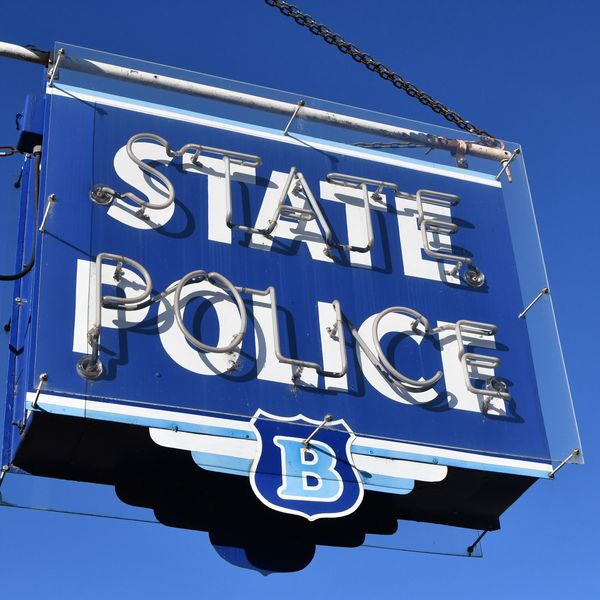CORNWALL — Although there lies a planet between Cornwall and Hawaii, a bond that spans centuries unites them.
On Thursday, Sept. 28, a delegation from the Island of Hawaii made pilgrimage to Cornwall to honor this bond and retrace the journey of their ancestor, Henry Ōpūkaha’ia: the first Hawaiian to convert to Christianity.
“This is something we’ve always wanted to do,” said Kahu Wendell Davis, senior pastor of Kahikolu Congregational Church in Kepulu and descendant from the family of Ōpūkaha’ia.
It has been over 200 years since Ōpūkaha’ia became the first pupil at Cornwall’s Foreign Mission School, where he learned the gospel and studied English to become a missionary among indigenous Hawaiians. The prevalence of Christianity in Hawaii today is largely attributed to Ōpūkaha’ia.
First Selectman Gordon Ridgway welcomed Pastor Davis, his daughter Puakailima Davis, and congregation member Butch Fellezs at the town historical society on Sept. 28 to celebrate Ōpūkaha’ia’s journey that culminated in Cornwall.
Ōpūkaha’ia was born in Hawaii in 1792 and was orphaned at the age of 10 during the Rebellion of Nāmakehā. Ōpūkaha’ia was enslaved by the ruling chief when Westerners arrived on the shore of the Island of Hawaii.
In 1807 he left the island life behind and climbed aboard the “Triumph” with Captain Caleb Britnall. The boat traveled to China before turning back, sailing below South America en route to Connecticut. Ōpūkaha’ia received his first English lessons on the long journey to New Haven.
It was on this boat that he was given the name Henry, likely because the sailors could not pronounce Ōpūkaha’ia. In Hawaiian, Davis explained Ōpūkaha’ia roughly means “brought from the stomach,” because he was born by Caesarian section.
Upon arrival in Connecticut, Ōpūkaha’ia spent time on Yale’s campus in search of further education in English and secular studies. His pursuit of knowledge prompted the creation of the Foreign Mission School in 1816, which opened its doors in Cornwall the following year.
The Foreign Mission School was active in Cornwall Village from 1817 to 1826 and instructed students from Native American tribes (most notably the Cherokee), Asia, and the Pacific Islands.
“They were instructed in Cornwall Village at this Foreign Mission School with the idea that they would become missionaries and go back to their native populations and spread the gospel,” said Ridgway.
While studying in Cornwall, Ōpūkaha’ia translated several texts to his native language. By 1818 he completed a dictionary, a grammar and spelling book, and had translated the Book of Genesis to Hawaiian.
Ōpūkaha’ia fell ill with typhus fever and was treated by Dr. John Calhoun in Cornwall. He died in the home that is still occupied by Calhoun’s descendants to this day: the Graceys.
Davises and Graceys met outside the fateful home on Sept. 28 and reunited the two families that had been separated for two centuries.
Jed Gracey showed an image of Ōpūkaha’ia that has been hanging in the home for generations. He gifted the Davises an old brass key from the home that was found while cleaning the floor boards. It perfectly fit the door to the room in which Ōpūkaha’ia died.
Pastor Davis blessed the doorway of the house to give peace to the spirits and honor the memory of Ōpūkaha’ia.
Ōpūkaha’ia died in Cornwall of typhus fever in 1818, but his texts were instrumental in the First Company mission to Hawaii later that year. His work in this area has credited him with beginning Hawaii’s conversion to Christianity.
Although Ōpūkaha’ia did not return to Hawaii, the missionaries that did return found a drastically different situation than when they had departed. By 1810, Kamehameha the Great had completed his unification of the Hawaiian Islands. In the 1820s, the days of warring tribes with varying deities were no more, and Davis said this made people receptive to Christianity.
“By the time of 1850, 30 years after the arrival of the missionaries, 90% of the people in Hawaii were already converted to Christianity,” said Davis. “They were baptizing Hawaiians by the thousands each Sunday.”
Christians in Hawaii honor Ōpūkaha’ia’s legacy as the first Hawaiian Christian on the third Sunday in February each year.
In 1993, descendants from Ōpūkaha’ia’s family requested the return of his body to Hawaii. His remains were laid at Kahikolu Church, the third church established by missionaries in Hawaii.
Ridgway said he was “a newly elected first selectman when those cousins... led the movement to bring Henry’s remains back to Hawaii.” One of his first acts as selectman was to sign the papers approving the re-interment.
The visit on Sept. 28 was brought about in part by two travelers from Redding on a visit to Hawaii nearly four decades ago. David and Elisabeth Noone visited Kapikolu Church and were surprised to see a plaque about Cornwall.
“In the back of the church there was a plaque on the wall commemorating Henry Ōpūkaha’ia,” said Mr. Noone. “We thought, ‘What’s this?’” added Mrs. Noone.
Upon returning to Connecticut, they traveled to Cornwall, found the gravesite, and learned the story of Ōpūkaha’ia. When they returned to Hawaii years later, they happened to meet Pastor Davis on a boat ride.
“He invited us to the church off coincidence,” said Mr. Noone. “It happened to be the day that they commemorate Henry.”
Mrs. Noone added, “He told us he had always wanted to come to Connecticut.”
The Noones got in touch with Ridgway and helped arrange the Hawaiian delegation’s visit, bringing the story full circle and reuniting the two peoples.
Kahu Wendell Davis and his wife, Mama Kahu Maria Davis, at the Hawaiian gravesite of Henry Ōpūkaha’ia. Photo submitted






 Scott Reinhard’s 16-foot-wide piece of the Northwest Corner is laid out on the floor prior to being hung for the show. L. Tomaino
Scott Reinhard’s 16-foot-wide piece of the Northwest Corner is laid out on the floor prior to being hung for the show. L. Tomaino




